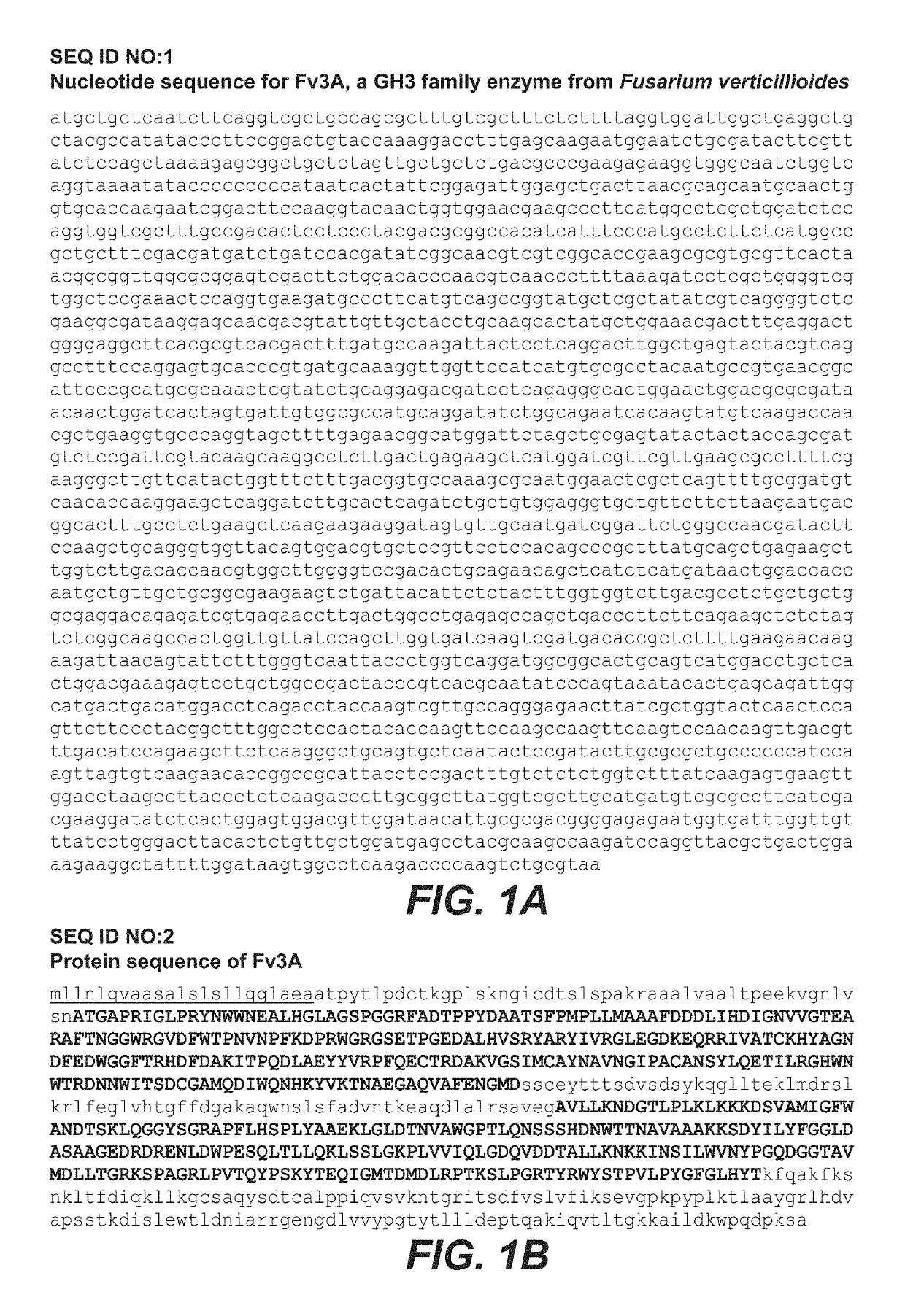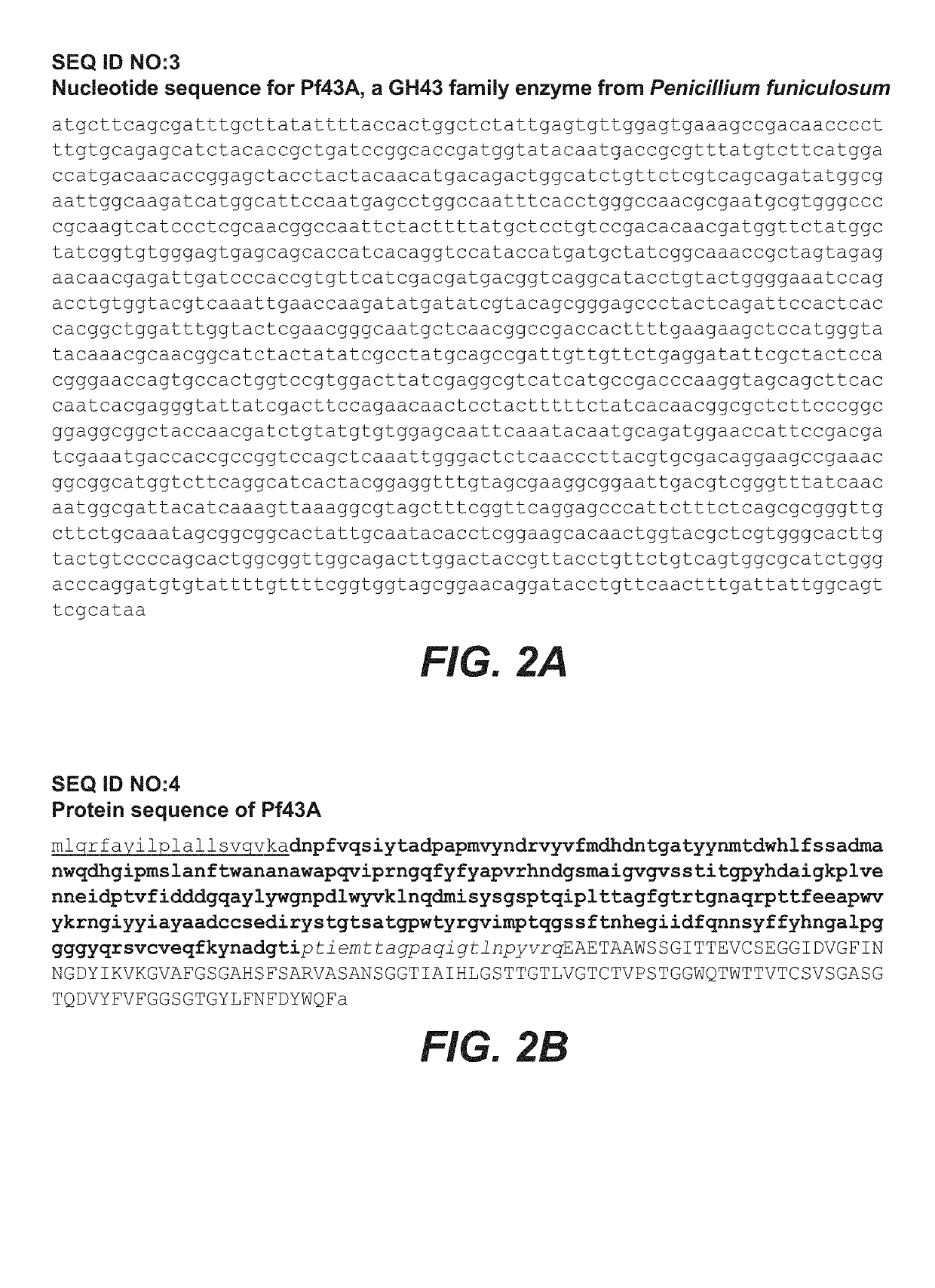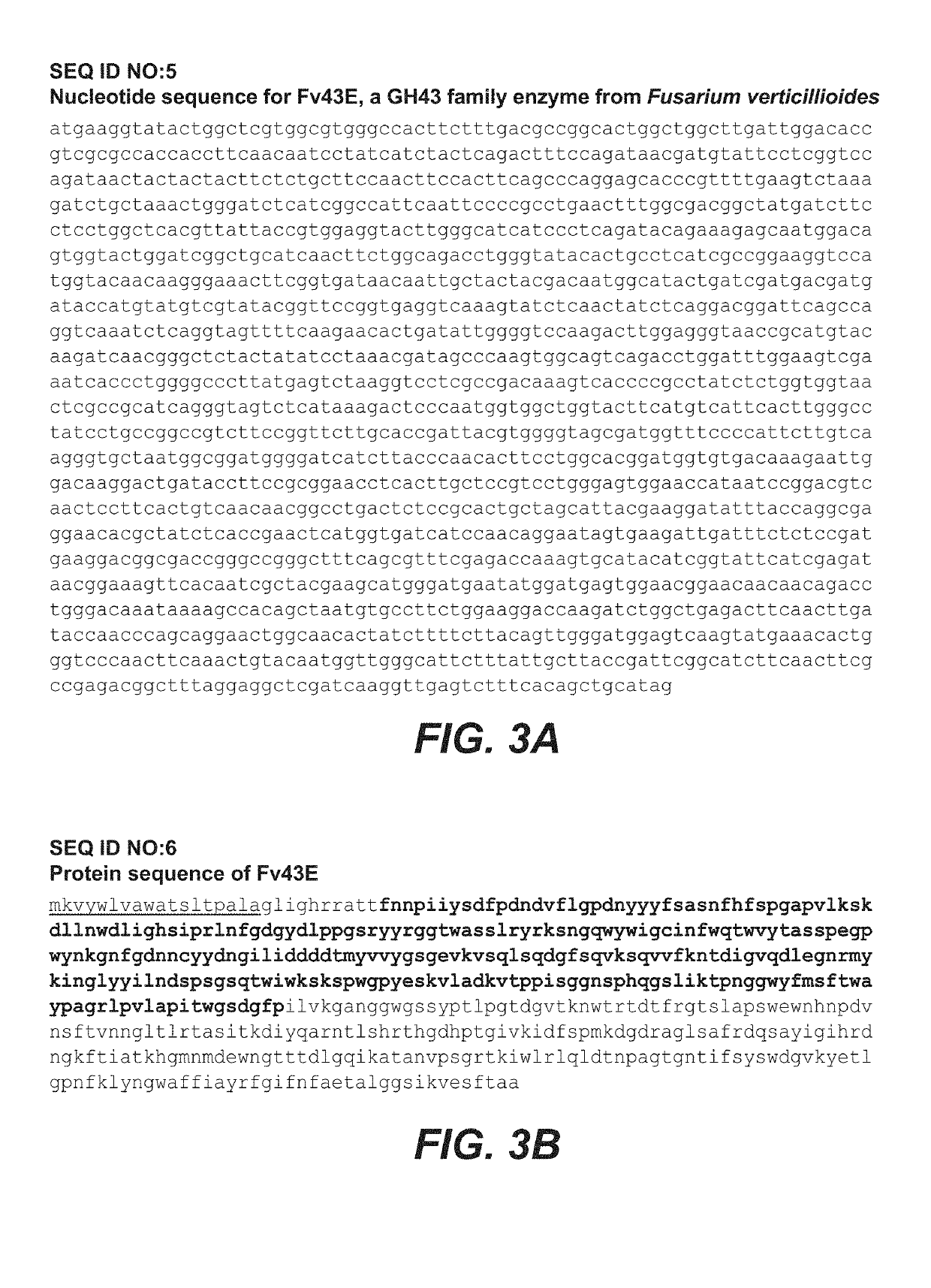Glycosyl hydrolase enzymes and uses thereof
a technology of glycosyl hydrolase and enzymes, applied in the field of glycosyl hydrolase enzymes, can solve the problems of cost and hydrolytic efficiency of enzymes, commercialization of biomass bioconversion processes, etc., and achieve the effect of reducing enzyme cost in biofuel production
- Summary
- Abstract
- Description
- Claims
- Application Information
AI Technical Summary
Benefits of technology
Problems solved by technology
Method used
Image
Examples
example 1
7. REPRESENTATIVE EXPERIMENTAL METHODS
[0393]7.1 Materials and Methods
[0394]The following assays / methods were used in Example 1 and subsequent examples. Any deviations from the protocols provided below are indicated.
[0395]7.1.1 Preparation of Hemicellulose from Plant Tissues
[0396]Hemicellulose preparations were prepared using a modification of the NaOH / sonication procedure described by Erbringerova et al. (Carbohydrate Polymers 1998, 37:231). Dry plant material was ground to pass a 1 mm screen and 10 g of this material was suspended in 250 mL of 5% (wt / v) NaOH. The suspension was heated to 80° C. without stirring for 30 min then sonicated for 15 min at ambient temperature using a probe sonicator at high setting. The suspension was returned to 80° C. for an additional 30 min then allowed to cool to room temperature. Solids were removed from the suspension by centrifugation at 3000×g for 15 min and the resulting supernatant was decanted into 1 L of ethanol which was cooled on ice. Aft...
example 4
10. HYDROLYSIS OF PRETREATED CORNCOB BY CELLULASE AND HEMICELLULASE PREPARATIONS
[0477]10.1 Saccharification Performance of Expressed Proteins
[0478]The saccharification performance of expressed proteins as additions to an enzyme mixture with an L-α-arabinofuranosidase deficiency was evaluated. L-α-arabinofuranosidase candidates were evaluated in a 4-day cob saccharification assay by addition to an enzyme mixture of Accellerase® 1500 / T. reesei Xyn3 / Fv3A. The screen was conducted as described in the corncob Saccharification Assay (Example 1) with the following enzymes and amounts / concentrations:[0479]Accellerase® 1500, TP (Total Nitrogen) 54.2 mg / mL[0480]Trichoderma reesei Xyn3, 2.9 mg / mL TP (purified)[0481]Fv3A, 3.2 mg / mL TP (purified)[0482]Fv51A, 7.8 mg / mL TP (purified)[0483]Mg51A, 6.8 mg / mL TP (TCA / BCA)[0484]At51A, 6.7 mg / mL TP (TCA / BCA)[0485]Pt51A, 3.3 mg / mL TP (TCA / BCA)[0486]Ss51A, 3.0 mg / mL TP (TCA / BCA)[0487]Vd51A, 6.8 mg / mL TP (TCA / BCA)[0488]Cg51B, 3.6 mg / mL TP (TCA / BCA)[0489]A...
example 5
11. SUBSTRATE RANGE OF B-XYLOSIDASES FOR EFFECTIVE CORNCOB HYDROLYSIS
[0538]In this example, the substrate range of 3 β-xylosidases and their relation to effective conversion of corncob xylooligomers to monomer sugars were determined. Preparation of corncob hydrolysate containing oligomeric sugars and assay of monomer sugars was performed as described in Example 1. The proton NMR spectra of oligomeric sugars with degree of polymerization (DP) greater than 2 as separated by size exclusion chromatography on Bio-Gel P2 were determined (FIG. 36 and FIG. 37). The spectra of oligomers before enzyme treatment is labeled “MD07 oligomers” in the bottom panel of FIG. 36 and spectra of the same oligo containing fractions after enzyme treatments are in the remaining panels of FIG. 36 and FIG. 37 labeled with the treatment enzyme.
[0539]The Bio-gel P2 fractions containing oligomers of greater than DP2 (5-10 mg) were lyophilized then dissolved in 0.7 mL of a D2O solution containing 0.5 mM 2,2-dime...
PUM
 Login to View More
Login to View More Abstract
Description
Claims
Application Information
 Login to View More
Login to View More - R&D
- Intellectual Property
- Life Sciences
- Materials
- Tech Scout
- Unparalleled Data Quality
- Higher Quality Content
- 60% Fewer Hallucinations
Browse by: Latest US Patents, China's latest patents, Technical Efficacy Thesaurus, Application Domain, Technology Topic, Popular Technical Reports.
© 2025 PatSnap. All rights reserved.Legal|Privacy policy|Modern Slavery Act Transparency Statement|Sitemap|About US| Contact US: help@patsnap.com



